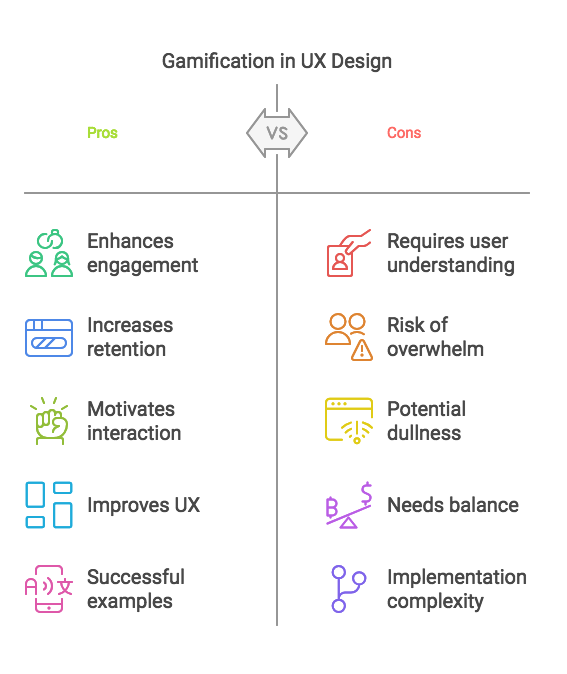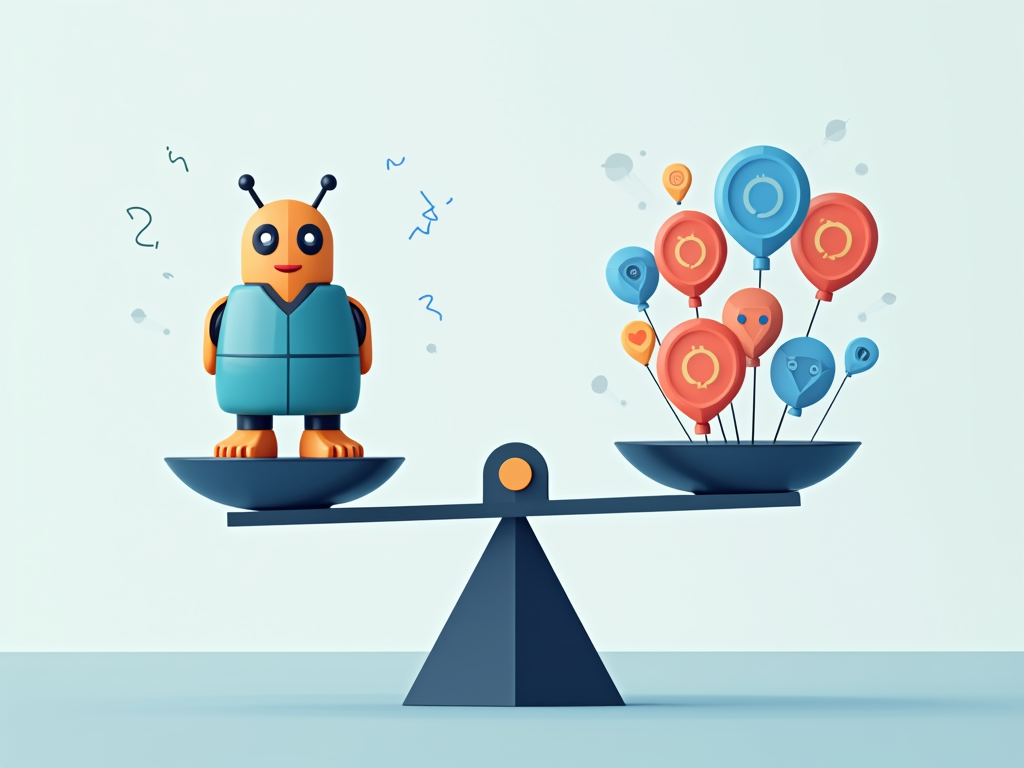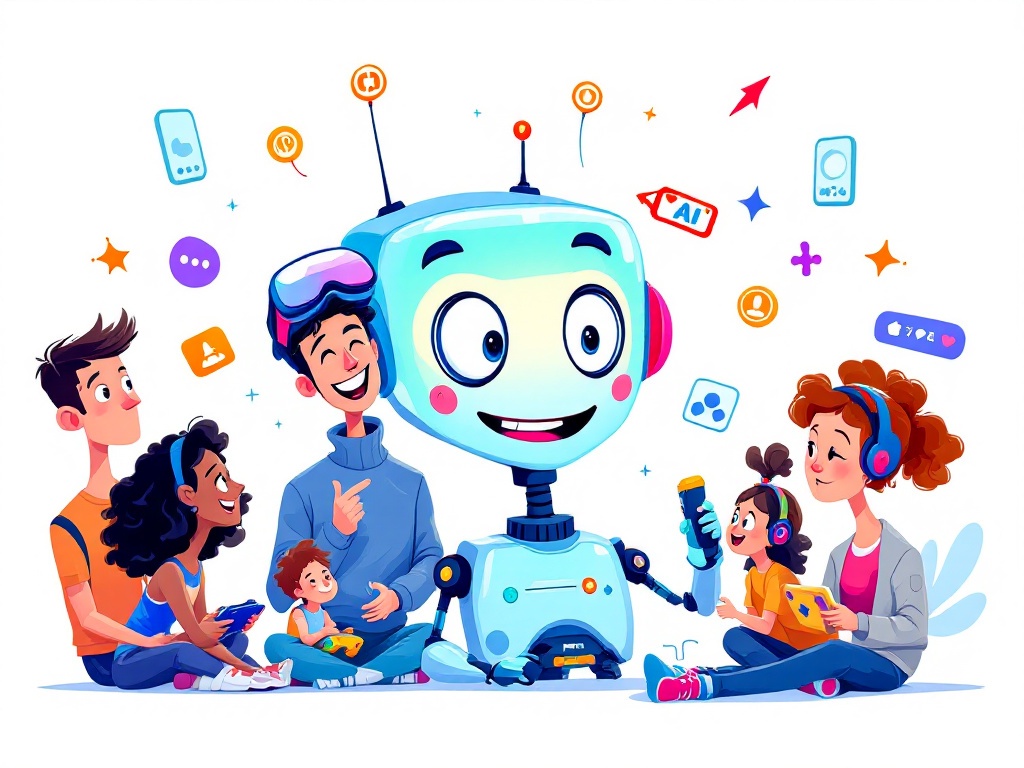Table of Contents
Introduction
Artificial Intelligence (AI), glorious in its futurism and fascinating in its possibilities, has been the topic of the town over the last decade. Seeped in the idea of designing smart computers that reconstruct human intelligence, AI’s footprint is omnipresent – be it healthcare, finance, logistics, or any other field you name.
Meanwhile, gamification, an equally catchy concept, has sauntered into the happening scene of User Experience (UX) design, leaving a lingering effect on the audience. Gamification is the crafty integration of game mechanics into non-gaming environments to enhance user engagement, augment motivation, and amplify retention. An example? Think of the rewarding ‘ding’ that a workout app sends your way after you’ve completed a set of pushups. Nothing too ‘game-like’, but just enough to keep you hooked.
Imagine what happens when the groundbreaking tech of AI crosses paths with the engaging tactics of gamification. Get ready to uncover a thrilling blend of responsive personalization and fun-filled motivation, all aimed at ramping up user engagement and interaction. The meticulously thought-out interplay of AI and gamification is opening up a Pandora’s box of opportunities to enhance UX like never before.
Sure, the concept might sound a bit mystic because, let’s face it, we’re at the interface of next-level tech and intuitive design. But fear not, we’re going to break it down, scrutinise its formidable edges, and explore the relevance of the AI-gamification combo in ramping up UX. So sit tight, as we foray into this fantastic new realm.
AI and UX: A Dynamic Duo
Artificial Intelligence (AI) is quite the game-changer when it comes to user experience (UX). It breathes life into the skeleton of UX design, allowing systems to observe, learn from, and adapt to user behavior, creating an interaction that is personalized down to a granular level.
Think about how Netflix recommends shows or movies tailored to your viewing preferences, or how Spotify clusters artists and songs into custom playlists based on the genres you most listen to. These are clear manifestations of AI-driven UX design in play. The power of AI lies in its ability to crunch immense data, identify patterns, and come up with smart recommendations that resonate with each user’s tastes and preferences.
Another eminent example is e-commerce platforms, like Amazon or Zalando, which leverage AI to display products according to the users’ browsing history and purchasing habits, thereby enhancing the online shopping experience.
AI in UX design isn’t just about personalization, though. It’s also about predictability, decision-making, and interactivity. For example, Grammarly uses a form of AI known as Natural Language Processing (NLP) to predict and correct grammatical errors in real-time while you’re typing.
The magic of AI is in its ability to turn static, one-size-fits-all user experiences into dynamic, personalized journeys. It transports each user into a world created just for them, based on their behaviors, preferences, and past interactions. This level of personalization heightens user engagement, boosts user satisfaction, and ultimately enhances the overall user experience.
AI, therefore, is not just a handy tool but an integral part of UX design. It’s the superglue that holds the world together, ensuring a seamless, interactive, and personalized UX that’s delightful to users.

Gamification: Enhancement of User Engagement and Retention
The term “gamification” might sound as if it’s confined to the gaming industry, but the ideas it promotes are universal and can be tapped into by all sorts of applications. At its core, gamification revolves around the concept of integrating game-like elements into non-gaming contexts. This could range from adding reward systems to a productivity app, developing leaderboards in educational software, or incorporating challenges into a fitness application.
The power of gamification lies in its capability to revamp user engagement and retain users’ attention effectively. The appeal of games reflects an innate human propensity – our love for play. Games are immersive because they stimulate our minds, challenge our problem-solving abilities, offer us rewards, and feed into our competitive spirit.
Gamification capitalizes on these factors to innovate and improve UX design. By introducing game-like elements into software or apps, designers can fuel users’ motivation, encourage them to interact with the product more widely and frequently and enhance their overall investment in the experience. The effectiveness of gamification in enhancing user engagement and retention can’t be understated, with numerous successes illustrating its potential. Duolingo, for instance, has successfully used gamification to make language learning an engaging and addictive task.
However, effective gamification isn’t just about adding points and badges; it requires a deep understanding of user behavior, preferences, and motivators. It’s a process that demands finesse and precision to strike the right balance. Too much gamification and users might feel overwhelmed, too little and the experience becomes dull. But when gamification is implemented correctly, it can significantly enhance user engagement and retention, making it an exciting and valuable tool in the arsenal of UX design.

Bringing AI into Gamification
When it comes to gamification – the art of weaving game-like features into non-game settings – AI is becoming an indispensable tool. Integrating AI into gamification strategies can considerably elevate the user experience, transforming it from a generic one-size-fits-all model into a personalized, engaging interaction.
For instance, AI can be utilized to better understand users’ behaviors and preferences, tailoring the gamified environment according to their unique requirements and interests. This element of personalization can drastically enhance user engagement and satisfaction, driving up participation rates and strengthening user commitment.
One excellent example of AI-integrated gamification is in the world of e-learning platforms. These platforms often employ AI-powered recommendation systems that track a user’s progress, evaluate their performance, and suggest customized tasks or modules based on their demonstrated skill level and learning style. For instance, Duolingo, a renowned language-learning app, employs AI in its gamification strategy to adapt the curriculum for each user, providing a learning pathway that’s more enjoyable and effective.
Beyond personalization, AI can also enhance achievement systems, one of the core elements of gamification. Through tracking individual user data, AI can award timely, meaningful rewards and badges that directly correlate to a user’s specific achievements, increasing the sense of accomplishment and motivation. In this regard, social networking app, Swarm, uses AI to deliver tailored badges and rank users based on their check-ins, making the app more interactive and engaging.
In conclusion, the integration of AI and gamification presents a rich opportunity to augment UX design. It not only personalizes user engagement but also adds an element of novelty, making every interaction feel unique while simultaneously improving the overall effectiveness of the gamified system. As AI continues to evolve, we can be certain that its fusion with gamification will constitute an increasingly dominant trend in UX design.
Exploring Use Cases: AI in Gamified UX
In the real world, there are several case studies that illustrate the powerful, transformative effects of implementing AI into a gamified user experience design. These use cases demonstrate how AI, combined with gamification tactics, can significantly improve various aspects of UX: increasing user engagement, driving user motivation, enhancing user retention, and offering more personalized experiences.
One of the shining examples of successful AI and gamification cohesion is Duolingo, the mobile language learning platform. By merging machine learning algorithms with gamification elements, Duolingo has been able to create personalized learning paths for each user. The AI automatically adjusts the level of difficulty, the types of quizzes, and the pace of lessons based on individual progress and performance. Furthermore, the app gamified learning experience—comprising of point systems, levels, and unlockable content—motivates the users to consistently return for more lessons— a testament to the app’s exceptional user retention strategy.
In another instance, the ride-hailing platform, Uber, uses AI to offer a gamified experience to its drivers. In this gamification model, drivers earn badges for accomplishments like excellent service or meeting specific ride targets. Although seemingly simple, these game mechanics are powered by AI algorithms that analyze driver behavior, ensuring every acknowledgment is tailored, meaningful, and aimed at enhancing performance.
Flow.ai, a platform for designing and training AI chatbots, is yet another example where AI and gamification intertwine. The platform uses game elements like quests, competition, and scoring to motivate users to train their bots better. Bots, on the other hand, are continually learning from user interactions. This collaborative effort between users and AI has ensured a robust, more efficient training process.
These implementations are effective because they take into consideration the main principles of gamification, such as competition, progression, and rewards, while leveraging the semantic understanding, personalization, and adaptive capabilities of AI. The success of these companies shows how integrating AI into designing a gamified user experience can lead to more engaged audiences and improved overall UX.
Challenges and Considerations in Integrating AI and Gamification
Navigating the integration of AI and gamification in UX design is not without its challenges. Pinpoint accuracy of intelligence has always been a pressing issue. AI’s capacity to learn and adapt requires vast amounts of data, which may be both time-consuming and costly to gather. Also, AI models may unintentionally introduce bias, impacting the fairness of the gamified experience, especially when it’s tailored based on personal data.
While AI has potential to enhance engagement through personalization, developers must remain attentive to the risk of over-personalization, which can lead to users feeling monitored or pigeonholed. It’s essential to strike a balance, ensuring designs remain exciting and refreshing, yet familiar, to keep users engaged without causing discomfort.
Moreover, integrating AI with gamification entails increased complexity – both in terms of design and technology. Designers must consider the game dynamics along with the workings of AI to shape a UX that’s interactive, engaging, and user-friendly. Technologically, developers have to ensure that AI functions smoothly within the gamified system.
Considering users’ diverse attitudes towards gamification and AI, it can be a challenge to design a UX that resonates with all. While some users might enjoy a competitive gaming experience, others may find it stressful. Similarly, perceptions of AI can vary greatly, with enthusiasm being offset by concerns about data privacy.
On this note, ethics plays a substantial role in this union. Designers must be transparent about their use of AI in gamified UX, including how user data is processed and stored. Trust is a vital factor in user engagement, and designers need to maintain this by honouring privacy and complying with data protection regulations.
In conclusion, integrating AI into gamification involves a tricky dance between technological know-how, UX design and ethics. Awareness of potential challenges and effectively addressing these can pave the way for AI to enrich gamified UX, leading to enhanced user engagement and ultimately, success in the digital marketplace.

The Future of AI in Gamification and UX
To say that AI’s journey in gamification and UX design has only just begun would be apt. It’s an evolving partnership with massive potential waiting to be harnessed. Emerging trends and advancements in AI could be real game-changers; hence, a glance towards the future is both necessary and intriguing.
Advancements in Natural Language Processing (NLP) and machine learning are increasingly making AI systems more human-like. We can look forward to chatbots and voice assistants powered by AI becoming more integrated into gamified systems. They could mould interactions to be more natural, personalized, and engaging – increasing the immersive potential of the UX design.
AI is also paving the way for adaptive learning systems, which could be a significant step forward in making UX design more user-oriented. In other words, the gamified elements in an application or a website would adapt according to the preferences, behavior, and interaction patterns of the user. This level of immersion could redefine the way users engage with a product.
In the realm of data analysis, AI’s predictive modeling could unlock fresh insights into user behavior. These preemptive reaches could help tailor UX to individual needs even before the user recognizes them.
On the other hand, with the rise of AI, ethical considerations become imperative. An increasing integration between AI and gamification demands transparency about data usage, secure data handling processes, and necessary measures to ensure data privacy. Ensuring ethical algorithmic practices will also be necessary to avoid biases, providing a fair and inclusive gamified experience to all users.
Lastly, the potential for AI in the field of virtual and augmented reality is staggering. As AI’s ability to interpret and learn from complex datasets improves, we may see highly immersive, responsive VR/AR environments that add an entirely new dimension to gamification and the user experience.
All of these potential developments indicate a future where AI is not just a part of gamification – it could be the driving force behind it. This ever-increasing integration between AI and gamification, while carrying its set of challenges, promises a future where UX design is increasingly dynamic, responsive, immersive, and user-centered. Just remember, with great AI power comes great design responsibility. So grab a joystick, because designing UX is about to become a lot more like playing a game.
Conclusion
In this comprehensive exploration of AI in gamification and UX, we’ve touched on numerous exciting truths and concepts. We’re currently in an era where AI is ushering in remarkable evolutions, affecting various fields, including gamification and UX design.
AI’s Influence in UX and Gamification
AI’s capabilities are clearly enhancing personalization and engagement of user experiences, as well as refining gamification strategies to make them more effective and impactful.
Real-world Cases
We have highlighted a few compelling examples that emphasize the impressive results achievable when gamification integrates effectively with AI.
Overcoming Challenges
Despite the few challenges present, such as potential complexities in integration and ethical considerations, the benefits brought forth by this powerful combination undoubtedly overshadow these hurdles.
Future of AI in Gamification and UX
Looking ahead, emerging trends suggest an even more pivotal role for AI in gamification and UX, paving the way for a landscape charged with innovative possibilities.
Key Takeaway
For designers, developers, or entrepreneurs, it’s crucial to understand the immense value of AI in gamification and UX design and to stay informed about developments in this area.
To conclude, we invite you to consider how harnessing AI can enhance your gamification projects, create remarkable UX designs, and keep pace with technology’s progression. Keeping a finger on the pulse of AI’s advancements is key to staying relevant in an ever-evolving technological landscape.
